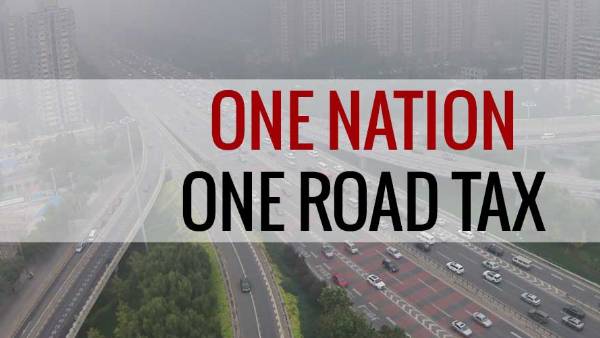Don't have an account?
Login to EaseMyDeal

2023-12-19
220

India, a nation of diverse cultures and landscapes, presents a peculiar anomaly within its borders - a significant variation in road tax for the same vehicle across different states. This incongruity not only burdens citizens but also presents obstacles in the cross-state movement and sale of vehicles. The need for 'One Bharat, One Road Tax' stands as an essential reform waiting to be implemented.
While the implementation of GST resolved disparities in the on-road prices of vehicles across states, another incongruity, the road tax, persists, demanding the attention of both union and state governments. The current scenario witnesses road tax disparities ranging from 2% to 18% of the vehicle's cost across various states, coupled with differing criteria for imposing this tax. This multiplicity leads to a burden on citizens in terms of compliance, while also incentivizing non-compliance and impeding the seamless sale of vehicles across state borders, particularly affecting the flourishing pre-owned vehicle market.
The process of road tax refund during vehicle sale or migration to a new state remains mired in complexity and lack of awareness. Despite being entitled to a refund, citizens are discouraged due to uncertainty and the strenuous efforts required. Navigating through multiple document submissions and frequent visits to Regional Transport Offices (RTOs) in both old and new states becomes a cumbersome ordeal. Authorities, at their discretion, calculate refunds or re-payments based on the depreciated value or invoice value of the vehicle, further complicating the process. The need for uniform taxation emerges as a remedy to alleviate citizens from compliance-related burdens and uncertainties.
This disparity isn't just a hindrance for individual vehicle owners but also poses significant challenges for businesses, particularly startups operating in the burgeoning used car industry. The industry, valued at $23 billion in FY 2021-22 and poised to grow substantially, faces bottlenecks due to varying road tax structures across states. This inconsistency stifles growth opportunities and hampers the ease of doing business, despite the commendable efforts of startups in formalizing the pre-owned vehicle market through electronic transactions and audit trails.
The Ministry of Road Transport & Highways introduced the innovative BH (Bharat) Series number plates to facilitate seamless interstate mobility for private vehicle owners. However, limitations in eligibility and the higher road tax imposed on BH Series owners, excluding pre-registered and commercial vehicles, restrict the full potential of this initiative.
India's aspirations to become a $5 trillion economy and set global benchmarks in digital infrastructure demand the removal of tax anomalies that hinder growth. The successful implementation of GST by collaborative efforts of union and state governments sets a precedent for the need to introduce 'One Bharat, One Road Tax.' This reform isn't merely about economic growth but also about ensuring citizen-friendly policies across states, fostering ease in vehicle ownership, disposal, and fostering consumer satisfaction and transparency.
In conclusion, 'One Bharat, One Road Tax' stands as a critical step towards streamlining tax structures, fostering a conducive environment for businesses, and ensuring citizen-centric policies. This reform isn't just about road taxes; it's about paving the way for a more efficient, transparent, and consumer-friendly automotive ecosystem in India.
This blog post articulates the necessity and advantages of implementing 'One Bharat, One Road Tax' in India, highlighting how it can streamline tax structures, benefit citizens, and boost the automotive industry's growth.
Write A Comment